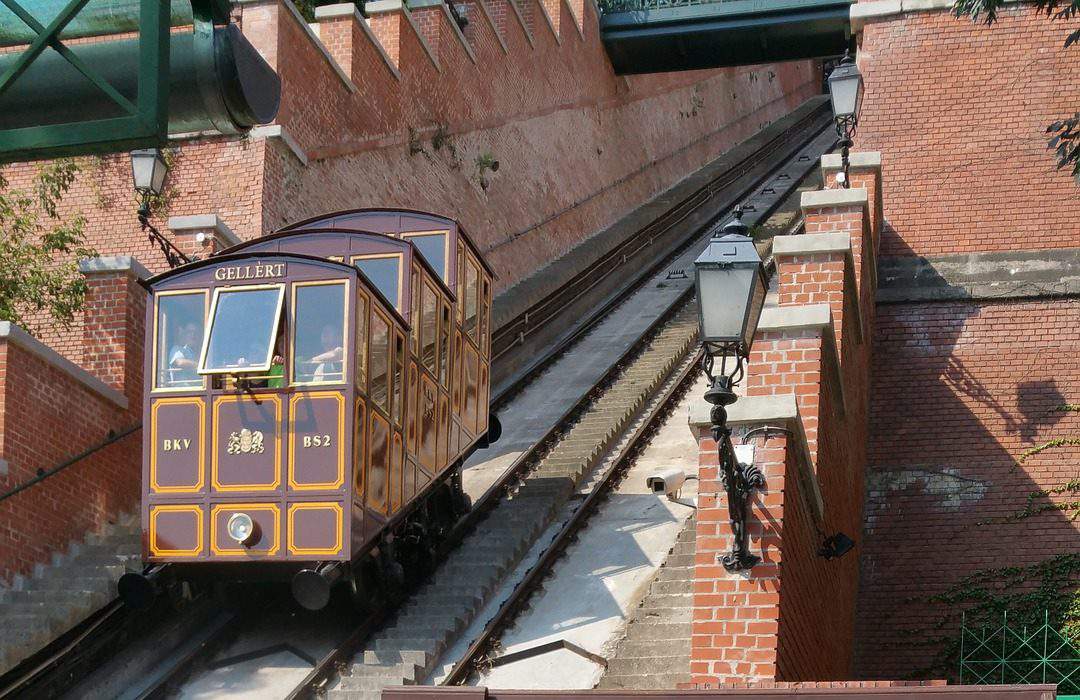Budapest Castle Hill Funicular part of World Heritage
100 meters long, 50 meters high with 30 degrees of tilt. Budapest Castle Hill Funicular operates since 1870. The funicular was severely damaged in the bombings of 1944. It was restored in 1986. It became part of the World Heritage one year later, as Pestbuda.hu reports.
Count István Széchenyi’s younger son, Ödön came up with the idea in 1866. It was inspired by the funicular connecting Croix-Rousse and Lyon.
The construction process began in 1868 and it took 16 months. The first plans were designed by Ödön Juraszek, but it was Henrik Wolfahrt’s blueprint according to which the world’s second funicular was built.
After the successful test runs, the first steam railway in Budapest was put into service in 1870. The bottom station was built at Chain Bridge’s bridgehead in Buda and the top one was built on Szent György Square. They are connected with a 100 meters long railway with two tracks.
The railway is tilted by 30 degrees. The bottom level is one story above the street.
The vehicle was supported by the 35 PS steam machinery at the lower station, but it was just helping the two rakes pulling each other. The machinery was built by Tórod Schulz’s factory in Vienna, while the furnace was from EMAG (the First Hungarian Machine Factory). The structures were towed with steel wires. Iron claws were attached to each end of the rakes in order to stop them on the slopes in the case of an accident. The two rakes were moving oppositely with a speed of 8 km/h. They were divided into three classes, and the total capacity was 24 people. A ticket for the first class costed 6 kreuzers, while the second class costed 4.
Only one accident occurred throughout the 75 years of the funicular’s operation: In 1896, a group of foreign journalists were travelling downwards from the castle. Another rake departed, but more than 24 people embarked. The machinist trusted the fireman with handling the vehicle, and — due the lack of his experience — he could not stop the vehicle in time, which collided with the headboard. The passengers suffered minor injuries, one of them broke both of his legs. A regulation was declared in 1897 to hinder any further accidents.
The funicular’s popularity was unbroken in the first half of the 20th century: 434,000 passengers travelled with it in 1932, and this number exceeded 2 million by 1944. After the vehicle was purchased by BSZKRT (the public transport company of Budapest), the tracks, buildings and rakes were renewed. They planned to replace steam with electricity, but this only came true in 1986. The funicular was hit by a bombing in 1945.
The Funicular Committee was formed in 1960. Several plans were made for the restoration of the funicular. Still, the process has not begun for years.
The restored funicular was revealed on 3 June 1986.
It is run by a 54 kilowatt electric engine placed under the top station’s building. The rakes could reach the speed of 3 m/s, but it was later halved due to the request of the passengers in 1988.
The Budapest Castle Hill Funicular, which transports 1,5 million passengers a year, has become a part of UNESCO World Heritage in 1987.
Ce: bm
Source: Pestbuda.hu
please make a donation here
Hot news
What happened today in Hungary – 26 July, 2024
Drama: number of births in a 20-year low in Hungary
Yay or nay? – 6 odd Hungarian delicacies that make our skin crawl
Budapest tourism “exploded” this past weekend
Container transport in Budapest may stop: How will this affect Hungarian economy?
Minister: Hungary will protect its territory by every means possible




